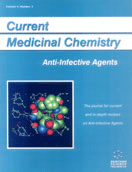Abstract
Since the discovery of brassinolide, a C28 steroid with an unusual lactone B-ring structure, more than 60 related compounds -collectively known as brassinosteroids (BRs) - have been isolated from a wide variety of plant species. Exogenous application of BRs to plants at nanomolar to micromolar concentrations has a broad spectrum of growth responses, such as stem elongation, inhibition of root growth, promotion of cell division and enhancement of stress resistance, brought about by changes in enzyme activity and gene expression. In the last years, biochemical and genetic analysis provided compelling evidence for an essential role of BRs in plant development. In this paper, we review our synthetic methods to obtain BRs analogues and report the scope of antiviral activity of these compounds against RNA and DNA viruses. Some of the compounds showed selectivity indexes (SI) 10- to 18- fold higher than ribavirin, a broad spectrum antiviral compound, when tested against Junin virus (JV) (Arenaviridae); a good antiviral activity against measles virus (MV) (Paramixoviridae), with SI values also higher than ribavirin used as reference drug, and a similar or lower activity against herpes simplex type 1 and 2 (HSV-1 and HSV-2) (Herpesviridae) when compared to foscarnet or acyclovir, respectively. Structure activity relationship studies (SAR) are analyzed, in order to detect which stereochemistry, type and position of functional groups are needed to develop a selective class of virus inhibitors.
Keywords: antiviral, brassinosteroids derivatives, measles virus, herpes simplex virus, arenaviridae
 3
3

